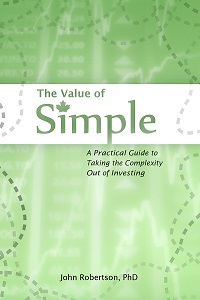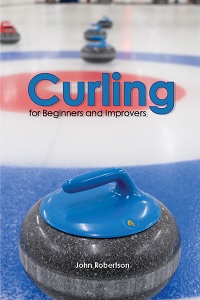ZEV Mandate Misinformation
June 23rd, 2025 by PotatoI don’t know if it’s just going viral because sometimes things do that, or if there’s a coordinated push from the various conservative social media accounts to attack Canada’s zero-emission vehicle (ZEV) mandate, or if I’ve accidentally trained The Algorithm into thinking I crave the absolute dumbest opinions on cars, but for whatever reason I am seeing a tonne of misinformation on social media about the ZEV mandate.
For those who don’t know, as one step toward meeting our climate goals Canada has set a sales target for a portion of new cars to be “zero emission”, starting next year (2026) with a 20% target, increasing each year until by 2035 gas-only vehicles are phased out completely and the market is 100% ZEV.
You Won’t be Forced to Drive an EV
This does not mean that you will have to buy an all-electric car: ZEVs include plug-in hybrids. So all the vitriolic takes about having to charge on long drives or running out of juice if stuck in traffic in the winter are nonsense misinformation based on misreading what the government means by ZEVs in the mandate. Most cars sold will continue to have a gas engine for extra range, heat in the winter, road trips, etc., they’ll just also have a battery to handle most local driving needs.
There are a bunch of PHEVs on the market today: a Prius Prime or Hyundai Ioniq if you want a mid-sized car; an Escape PHEV (like mine — as much as I criticize aspects of it, it’s a great driving solution) or Rav4 Prime if you want a regular SUV; a Pacifica if you want a van; an Outlander or Sorento if you want a giant SUV. And many more options that will be coming in time for 2035.
Almost 14% of cars sold in 2024 were ZEVs. Now, most of those were in Quebec where there are significant provincial incentives, but if all it takes is $7k to move the needle that much, then the national quota/credit system should help make it happen (and if not, driving a gas guzzler may become a Veblen good). To my surprise, despite a PHEV being the better solution, most of the ZEVs sold last year were actually full battery-electric vehicles (BEVS), about three-quarters. But IMNSHO, that was in part due to availability: the Rav4 Prime is still backordered to hell, the Escape PHEV was just starting to become available in 2024 and I believe the Hyundai options were largely in the same boat, the Prius Prime was still a brand-new model, and many other options were compliance frankenvehicles. As we move toward 2035 and the ZEV mandate starts to force sales towards ZEVs, I think we’ll see PHEVs take the lead over BEVs.
Charging Infrastructure
The next big misinformation point is for posters to wring their hands up and say there’s no way we’ll have the charging infrastructure for all those electric-powered cars in that time… without ever providing data or a calculation to back that fear-mongering up (“Can you imagine?”). Or assuming an unrealistically worse-than-worst-case scenario, like that all cars are full EVs and have completely drained their batteries at the same time and all want to do fast charging at once.
So let’s do a quick back-of-the-envelope exercise. ZEVs need very roughly 10 kWh/day — the PHEVs largely have roughly that much battery capacity, and they charge from a regular household outlet at about 1 kW overnight at off-peak times. The BEVs will have more capacity (call it 70 kWh for their total battery capacity), but the average demand will come in close to that (because most days they don’t drive their full range). They’ll have higher power chargers (level 2), but if we can handwave away that they won’t all be on at the same time, the population-level effect comes out to the same sort of order-of-magnitude of a kW or so for mostly off-peak times.
Ontario has just over 8 million passenger vehicles. Though there would be 10 years before the ZEV mandate kicks in, and more time for all those new cars to work their way into the system (the gas-only cars sold today would still be around then so we’d have two or three decades to fully add any grid or power generation needs), let’s assume the worst-case that a wizard has cursed us to all drive ZEVs tomorrow. 8 million cars times a kW each is 8 GW of power demand, mostly off-peak.
Ontario, on a typical day, uses about 19 GW on-peak, and 13 GW off-peak (NB: 10-year-old data), so we have something like 6 GW — almost all! — of that grid capacity sitting in our back pocket right now. Yes, it would be a problem if all those cars tried to charge on-peak on a hot summer day with peak A/C demand, but that’s not generally how people charge their PHEVs or even their EVs — they plug in after they get home, often with the car having a timer to wait until off-peak rates to start charging. And that’s our magic-wand scenario — the ZEVs will phase in more slowly, so there will be lots of time for the grid (and generation) capacity to grow.
Cost for Canadians
The last point of misinformation is that this ZEV mandate is going to make cars more expensive for Canadians, and that one does has a big grain of truth to it, but is more subtle and complicated than just comparing the sticker price of an electric car to comparable gas-only one. First off, a system of quotas and credits will generally mean the people driving gas-only cars subsidize the costs of those driving ZEVs. Indeed, in other markets Tesla sells its BEV credits to other manufacturers, so those BEVs are subsidized so much that in many quarters Tesla has more regulatory credit income than it does net income (i.e., the cars are otherwise sold at a loss). So yes, it will make gas-only cars more expensive, but the ZEVs should be cheaper as a result, benefiting the early adopters (with the trade-off that ZEVs are more expensive in the first place).
But the up-front cost is only part of what Canadians pay to drive their cars. Driving on electricity is cheaper than driving on gas for almost all ZEVs out there in almost all jurisdictions. Indeed, part of why I opted for the more expensive Ford Escape PHEV over a comparable hybrid or dino gas-only model is that I expect to save money over its lifetime. While social media may complain that the mandate is increasing prices on Canadians, and that’s largely true for up-front costs, there’s a good chance it will actually help them save money, by nudging them (or in later years, shoving them) into buying a car with a lower total cost of ownership — paternal and all that, but helpful for people that only consider the up-front cost of a car.
The Actual Good Point They Miss
However, that lower total cost of ownership will only apply for those people who are able to plug in at home, and that is not going to be everyone, even in a decade. Which is the one really strong criticism of the mandate: 100% is not necessarily the right number for the final step of the mandate. However, I haven’t seen any of the people who are angry at the mandate discuss the flaws in its specifics and how to make it better, they seem to be angry about the very notion of regulating the free market.
Some people won’t be able to charge (and some will steadfastly refuse to for various reasons and irrational personal preferences even when they can), so in those cases they will be paying more for capabilities they aren’t able to use — only having PHEVs/BEVs available with higher up-front costs really will increase their cost of ownership, as they pay for a battery they won’t use and just go to the gas station like they do today.
Now, an argument can be made that despite that, the target has to be 100%: if we make it say 75% to account for the ~25% who can’t realistically operate on electricity, there is no way the right 25% will end up buying the gas cars: lots of people with the ability to charge will just buy gas cars because they want to as long as they’re available (indeed, buying a gas-only car may become a status symbol; gas guzzlers already are). Manufacturers, when buying credits are an option, may just opt to buy the credits and pass along the higher costs rather than innovate. A partial mandate may keep the momentum and status quo going far longer than if we went for the aggressive, full ZEV mandate, and having some people pay for charging capabilities they will rarely use may just be the cost to get us to a more decarbonized future, some proponents may argue.
So 20% ZEV sales next year is a pretty decent jump from 14%, but totally doable. Some small pricing tweaks on both sides will help manufacturers hit their sales mixes, combined with greater volume availability on the models that are popular anyway. But those targets will get increasingly harder to hit without better adoption by Canadians, and better model offerings (and pricing) from manufacturers. And I’m not convinced 100% is the right stopping point, but also don’t know how to better set the right level, and regardless that’s a more nuanced conversation than “ZEVs bad, government forcing you to do bad things!”
Aside: Confused at Car Manufacturers
I’ve done a few deep dives into hybrids and EVs over the years, but my expertise is not in cars or production. However, I know the hybrid synergy drive used by Toyota and Ford (with some shared patents) has proven itself to be reliable, efficient, and smooth. To the best of my understanding of how patents work, that system is off-patent now (and has been for a little while). So why the hell are so many manufacturers trying to re-invent the wheel (or HSD) rather than just throwing that wonderful, proven system into ~all their models? Why does Hyundai use a regular automatic transmission with an electric motor bolted to it (and get sub-par city mileage)? Why has Honda gone through like three different versions of their hybrid transmission? Why does Volvo sin against nature1 with its PHEV monstrosities? Why is it seemingly so hard to just take the thing that works, and then use it more? (For that matter, it took Toyota long enough to streamline even a tiny portion of its models to hybrid-only, and some models still don’t have a hybrid version at all).
1. I know explaining the joke doesn’t make it funnier but I feel like I should explain: a common criticism of hybrids is that they’re more complex than gas-only cars so they must be inherently less reliable. Which the data shows us is wrong (the various Prius generations own the reliability rankings, and the problem spots on the 3rd gen were the gas engine, not the hybrid system). But more to the point, it’s not actually true for Toyota/Ford HSD hybrids: you add a pair of electric motors, an inverter, and a big battery, but those motors and the power split device then replace the starter, alternator, transmission, and clutch (and I believe something else that is escaping my memory as I write this). Having that electrical generation capacity then lets you take out all the belts, so the A/C and other things can now be replaced with more reliable electric versions (and the power split and electric motors are way more reliable than a conventional automatic transmission). It’s actually fewer moving parts overall, with more reliable versions — it just sounds more complex. Volvo (and a few other manufacturers) are not using that system, they are in fact just bolting a motor and battery on to the car, and keeping all the old parts: conventional engine (indeed a turbo, not even an Atkinson-cycle which is where all the magic of a hybrid comes from and a huge part of why their fuel economy figures suck once the EV range runs out), conventional transmission, starter, etc. is all still there, plus a motor to run the other set of wheels and a battery and an inverter. All those tired criticisms of hybrids we’ve spent decades dispelling they’ve gone ahead and made manifest.




 Questrade: ETFs are free to trade, and if you sign up with my link you'll get $50 cash back (must fund your account with at least $250 within 90 days).
Questrade: ETFs are free to trade, and if you sign up with my link you'll get $50 cash back (must fund your account with at least $250 within 90 days).  Passiv is a tool that can connect to your Questrade account and make it easier to track and rebalance your portfolio, including sending you an email reminder when new cash arrives and is ready to be invested.
Passiv is a tool that can connect to your Questrade account and make it easier to track and rebalance your portfolio, including sending you an email reminder when new cash arrives and is ready to be invested.